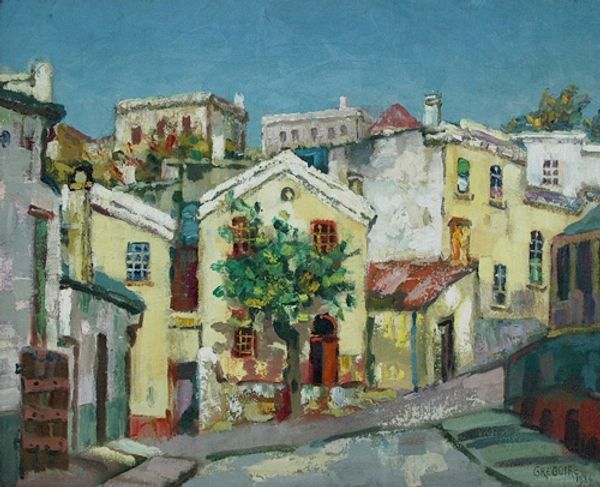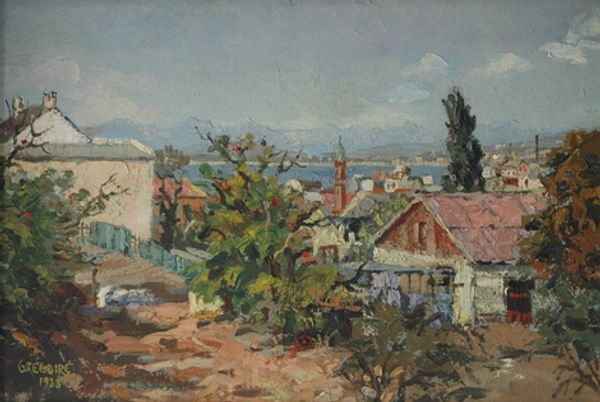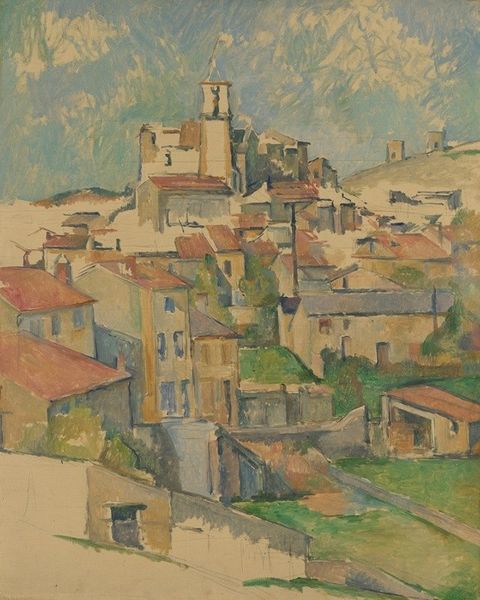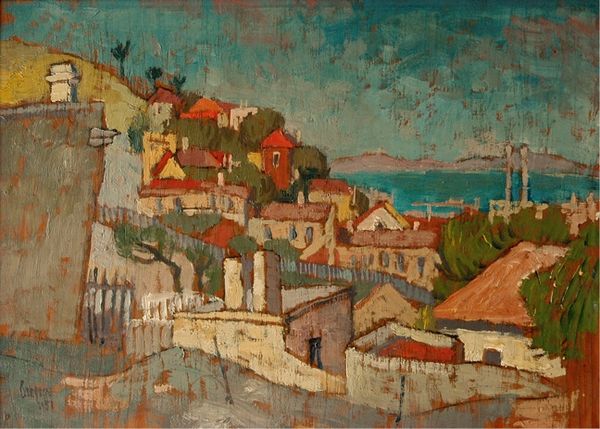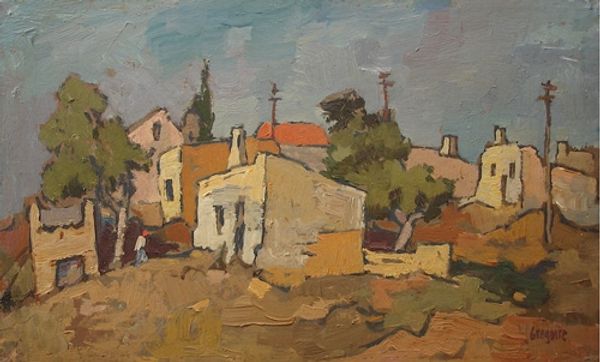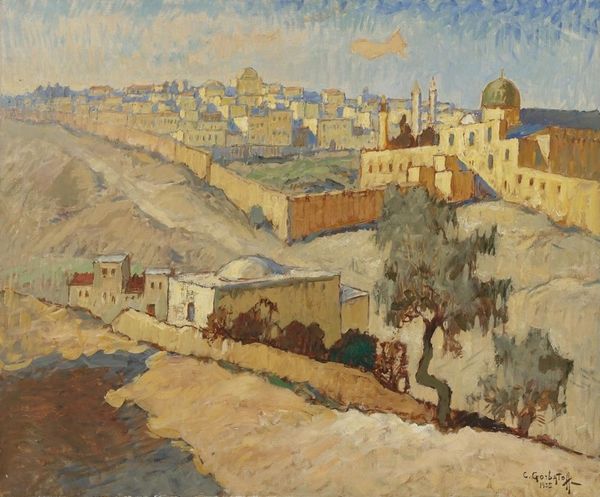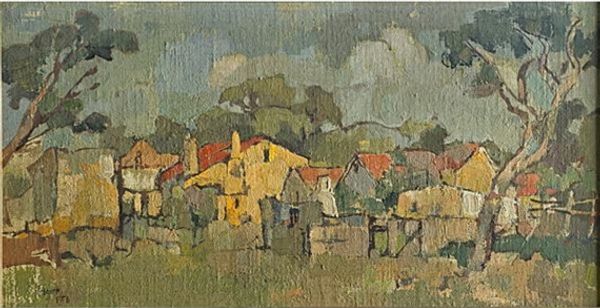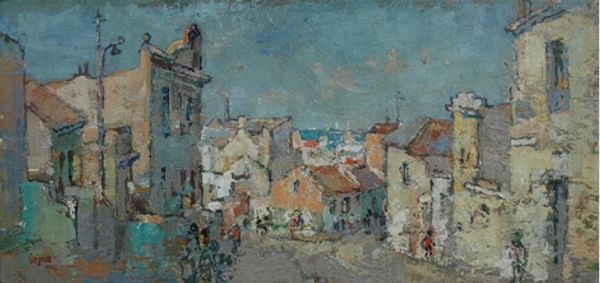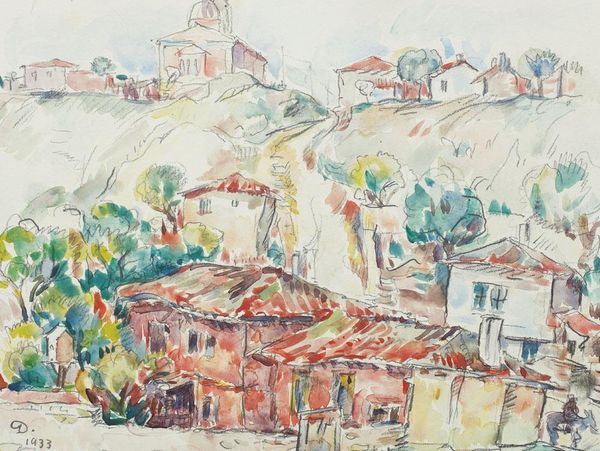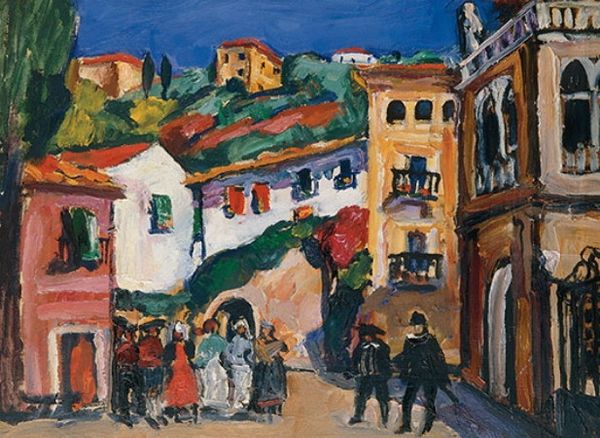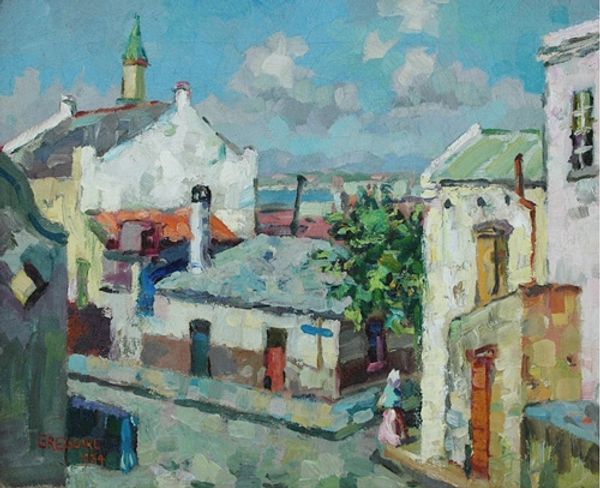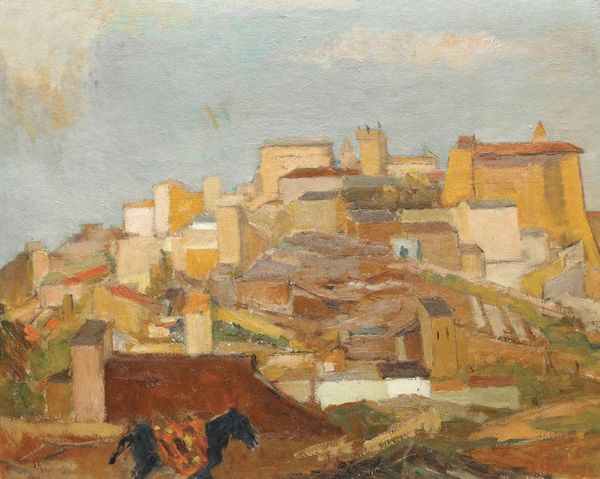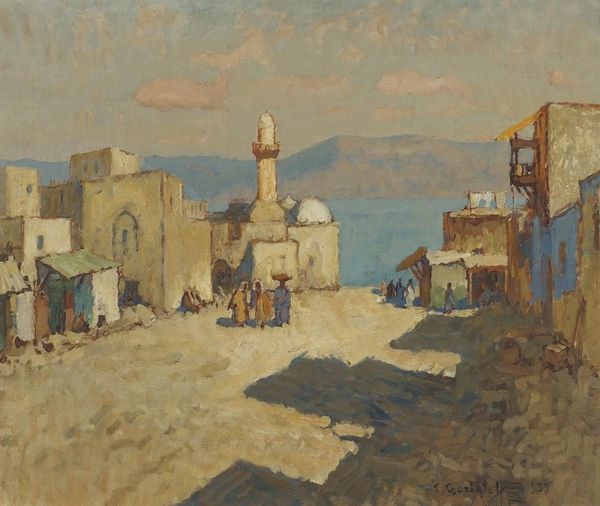
painting, oil-paint, architecture
#
painting
#
oil-paint
#
landscape
#
oil painting
#
cityscape
#
architecture
#
realism
Copyright: Gregoire Boonzaier,Fair Use
Editor: This oil painting is titled "District Six," created by Gregoire Boonzaier. It portrays a cityscape, and the warm colors give it a nostalgic, almost dreamlike quality. What story does this artwork tell, in your view? Curator: Boonzaier’s "District Six" offers a powerful glimpse into a community facing imminent erasure. Viewing it through a historical lens, we must acknowledge the forced removals that defined District Six's legacy under apartheid. Editor: Forced removals? Curator: Yes. The vibrant brushstrokes and warm palette belie the harsh reality of displacement. Notice the density of the buildings – how they seem to huddle together. What does that evoke for you? Editor: A sense of community, of closeness. But knowing the history, it's heartbreaking because that closeness was deliberately destroyed. The architecture now feels almost fragile. Curator: Precisely. Boonzaier’s artistic choices invite us to reflect on the political forces at play. Consider how museums display this piece; is it presented as a purely aesthetic landscape or with the socio-political context emphasized? Editor: That's a critical point. I imagine framing it as simply a 'landscape' would strip it of its power. We’d lose the critical connection to social justice. Curator: Exactly. The public role of art, especially regarding politically charged imagery like this, demands careful consideration. What is the responsibility of galleries in ensuring that context isn't lost? Editor: To contextualize and inform, offering diverse interpretations while never obscuring the historical facts. I hadn't fully grasped the artwork’s depth until our discussion. Thank you. Curator: And thank you. It’s by understanding the socio-political climate in which "District Six" was created that we truly understand its value.
Comments
No comments
Be the first to comment and join the conversation on the ultimate creative platform.
